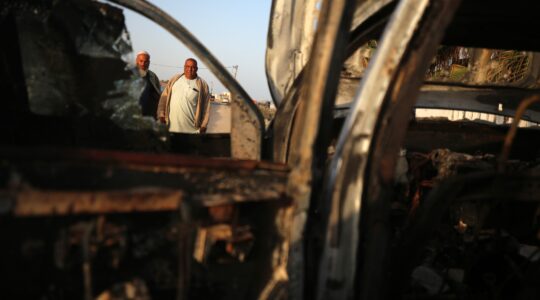ROME, Jan. 9 (JTA) — Experts have completed restoration work on the 600-year-old Sarajevo Haggadah. Jakob Finci, the president of the Bosnian Jewish community, told JTA that repairs to one of the world´s most famous Jewish manuscripts were completed a few days ago. Work will soon begin to ready a special room to display it in Sarajevo´s National Museum. “I hope this will be finished by May,” Finci said. Handwritten and illustrated in Spain in the 14th century, the Haggadah was brought to Sarajevo after the expulsion of the Jews from Spain in 1492. Owned by the Sarajevo National Museum since 1894, the 109-page manuscript, lavishly illustrated with illuminated paintings, has long been the symbol of Jewish presence in the Balkans. More recently, during the Bosnian war in the 1990s, it became a symbol of the shattered dream of multiethnic harmony in Bosnia. Just before Passover last year, three international experts examined the Haggadah at the invitation of UNESCO. After their visit, Jacques Klein, the head of the U.N. mission in Bosnia, announced that minor repairs would be undertaken on the Haggadah, primarily on its binding. The U.N. mission in Bosnia contributed $50,000 to the project, including the new display room at the museum. Additional financing came from several other donors —Klein, the German Embassy in Bosnia and Herzegovina, the World Bank and Bosnia´s Jewish community. A team of international experts, led by Andrea Pataki, a restorer of the Austrian Academy of Fine Arts in Vienna, carried out the restoration. Pataki, who has worked with rare manuscripts in Israel and the United States, told the Sarajevo newspaper The Balkan Times that she mainly had to repair and stabilize the 19th-century binding and the end papers. But she did not have to touch the magnificent colored illustrations which date from the mid-1300s. “I checked under a 25X microscope and I didn´t see any flaking or powdering of the pigments,” Pataki told the Balkan Times. “The overall condition is very good for its age.” Pataki said she also did not want to do anything to remove the wine stains and other signs that bear witness to the Haggadah´s use at the seder table. “That´s something you never touch — it´s part of the book´s history,” she said.
Historic Haggadah restored
Advertisement





